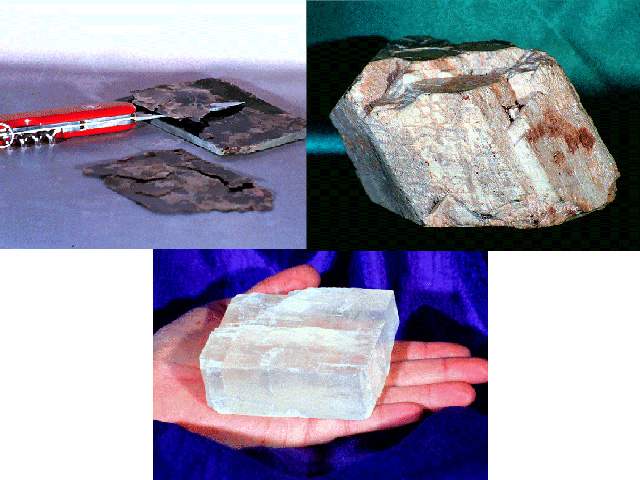
Mineral Identification (Part 5)
Fracture and Cleavage
Fracture and cleavage both describe how a mineral breaks. Fracture refers to rough or irregular surfaces along which the mineral breaks randomly. Cleavage refers to flat planes along which some minerals break.
Fracture can be described as conchoidal, rough, smooth, or fibrous.

Minerals can be identified by how they break. Obsidian (left), although not a mineral because of its lack of crystal structure, shows excellent conchoidal fracture. Asbestos (right), which is the common name for several minerals that form thin, threadlike structures, is an example of a mineral with fibrous fracture. (Photographs by Parvinder Sethi)
Cleavage is caused by internal weaknesses between certain planes of atoms. Cleavage may be in one, two, three, four, or six directions. The angles between cleavage planes vary with different minerals, and can be used to identify minerals.
 Minerals with cleavage break more easily along at least one plane. Biotite mica (top left) is a mineral with one direction of cleavage. Orthoclase feldspar (top right) shows two directions of cleavage at approximately 90 degrees. Halite (bottom), or rock salt, shows three directions of cleavage at 90 degrees. (Photographs by Parvinder Sethi)
Minerals with cleavage break more easily along at least one plane. Biotite mica (top left) is a mineral with one direction of cleavage. Orthoclase feldspar (top right) shows two directions of cleavage at approximately 90 degrees. Halite (bottom), or rock salt, shows three directions of cleavage at 90 degrees. (Photographs by Parvinder Sethi)
Click to play video.